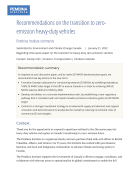The likelihood of Canada meeting its international and national climate commitments depends in no small part on decarbonizing the transportation sector — the largest source of greenhouse gas emissions after oil and gas.
ZeroX2040
Strategy for zero-emission medium- and heavy-duty vehicles

Key research & analysis
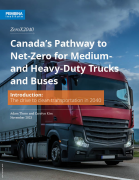
Canada’s Pathway to Net-Zero for Medium- and Heavy-Duty Trucks and Buses
The drive to clean transportation in 2040


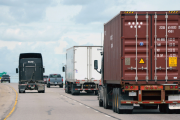
Ambitious, staggered sales mandates a key to meeting zero-emission MHDV targets
Recommendation tops a set of policies Canada needs to steer the MHDV transition
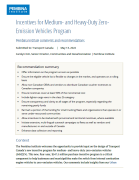
Incentives for Medium- and Heavy-Duty Zero-Emission Vehicles Program
Pembina Institute comments and recommendations
Why we work on a ZE strategy
Reducing emissions produced by trucks and buses needs to be a priority – they account for approximately 37% of overall transportation emissions and pollution generated by these vehicles is trending upward. Since 1990, emissions from medium- and heavy-duty vehicles (MHDVs) have nearly doubled and if current trends continue, MHDVs are expected to become the largest source of emissions in the transportation sector.
Efforts to transition to non-emitting trucks and buses in Canada’s 2030 Emissions Reduction Plan (ERP) includes a commitment that 35% of new MHDVs sold by manufacturers must be zero-emission (ZE) vehicles by 2035, and that 100% of all new sales of MHDVs (based on feasibility) are ZE by 2040. Canada along with 26 countries, has signed an international pledge – Drive to Zero – to achieve 100% ZE MHDV sales by 2040.
However, our modelling shows that the federal government’s current suite of climate policies and programs will not advance the transition to ZE MHDVs at the pace required to reach these sales targets.
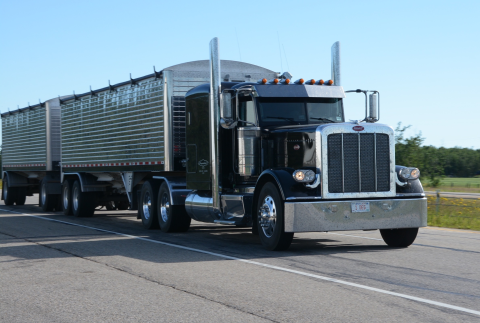
ZeroX2040: A multi-stage strategy for Canada
The Pembina Institute has developed the ZeroX2040 national strategy, Canada’s Pathway to Net-Zero for Medium- and Heavy-Duty Trucks and Buses, which provides guidance on how Canada can gradually turnover its fossil-fueled MHDVs to ZE ones by 2040.
The strategy consists of an introductory report and a two-part strategy: Part I focuses on zero-emission vehicles; Part II focuses on charging and refuelling infrastructure. It provides more than 20 policy recommendations to overcome the planning gaps and market uncertainties surrounding the availability of MHDVs and the necessary infrastructure to support adoption. A technical appendix provides details on our modelling.
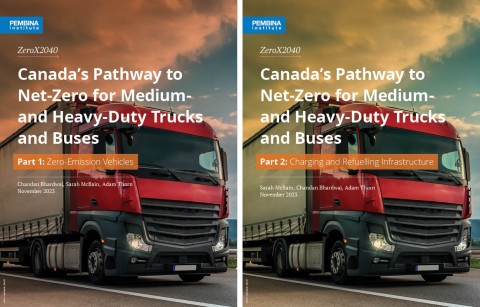
A sales standard: key to the ZeroX2040 strategy
Central to our recommendations is that Canada implement a strong sales standard. The ZeroX2040 strategy twins the sales standard with infrastructure build-out, advising that development sync with the anticipated number of ZE trucks and buses on the road.
By implementing our policy recommendations including the advised sales targets, MHDV carbon emissions would decline from 35 Mt in 2020 to 10 Mt or less by mid-century and would drop by as much as 80% by 2050 relative to 2020 levels.
Our recommended policy landscape
Our recommended policy landscape for zero-emission MHDVs includes:
- Policy and regulations
- Regulations such as mandates for 100% zero-emission vehicle sales and stringent vehicles emissions standards
- Policies such as strategic investments for a domestic zero-emission automotive industry and value chain, R&D and demonstration support, and public procurement schemes
- Regulations such as mandates for 100% zero-emission vehicle sales and stringent vehicles emissions standards
- Incentives and subsidies
- Charging and fuelling infrastructure
- Capacity-building
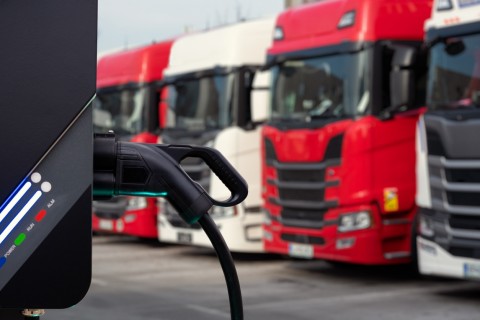
Canada’s commitments
2022 Emissions Reduction Plan
To reduce emissions from medium-and heavy-duty vehicles (MHDVs), the Government of Canada will aim to achieve 35% of total MHDV sales being ZEVs by 2030. In addition, the Government will develop a MHDV ZEV regulation to require 100% MHDV sales to be ZEVs by 2040 for a subset of vehicle types based on feasibility, with interim 2030 regulated sales requirements that would vary for different vehicle categories based on feasibility, and explore interim targets for the mid-2020s. (2030 Emissions Reduction Plan, p. 57)
12th Clean Energy Ministerial
The Canadian government announced intentions to pursue a global agreement to achieve 100 percent zero-emission MHDV sales between 2040 and 2050. (Global Commercial Vehicle Drive to Net Zero)

Contact our transportation team

Program Director
Adam Thorn
c: 416-859-4108
e: adamt@pembina.org
Media Contact
Lejla Latifovic (Eastern Time)
c: 819-639-4185
e: lejlal@pembina.org
Get our Pembina Perspectives
Pembina Perspectives provides thoughtful, evidence-based research and analysis to support action on climate — in your inbox every two weeks.
We endeavour to protect your confidentiality; read our full privacy policy.
Supporters
This work is supported by the Pembina Institute’s Urban Delivery Solutions Initiative and:



